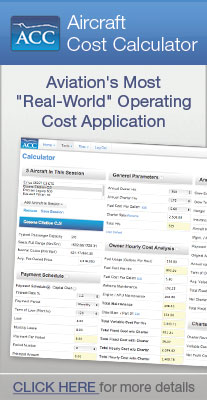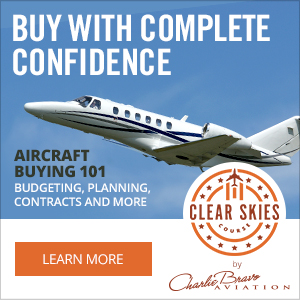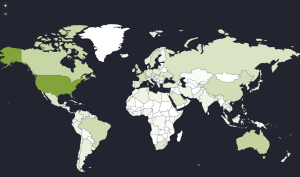Podcast: Play in new window | Download
Business aviation is a competitive-advantage tool. And like any tool, business aviation requires mental and monetary investments to leverage time so users can maximize productivity and potential (at work and at home).
Decoding the financial framework that funds owning/operating a business aircraft (charter, fractional, full ownership) helps keep costs within your value circle. Our expert today is no stranger to the bucks behind business aviation.
Shye Gilad has secured aviation funding, sourced airplanes, and operated business aviation assets since co-founding ProJet Aviation in 2007. With 20 years in the game, a Georgetown MBA in international business, and extensive experience training and consulting executives and entrepreneurs, Shye has become a valued asset in ProJet’s Washington DC community and within the business aviation industry. He joins today’s episode to make the money simple.
Cost Control Made Easy
Our discussion evolved around two points: First, to control costs prospective users are advised to wear the right spectacles. Most industry lenses will skew the business aviation picture. The property investor, manufacturer, or heir applies known filters from other sectors to business aviation… thinking success there equals success here. The result? Undisciplined spending, frustrating experiences. Wear business aviation glasses to see the clearest business aviation picture.
Second, to see the clearest business aviation picture, expect to allocate 3% to 5% of your business aviation stipend to advisors. THIS is how you’ll spot speed traps, avoid wrong turns, and reach your destination ahead of schedule. Now, let’s cover the…
Three Cost Columns
Money invested in business aviation falls into three cost columns. 1) Financing 2) Acquisition 3) Operating. Financing an airplane is easiest in the “new” market. OEMs (original equipment manufacturers) want to move airframes. They have the banking relationships in place so your purchase experience is exceptional.
In the “pre-owned” market, financing can be a bigger challenge. Here, a principle’s long-standing professional/personal banking relationships can reduce funding headwinds. This helps the buyer take full advantage of current depressed pricing, especially in the large-cabin market. Think buying a Porche Carrera for the price of a Ford Explorer. Keep in mind, cash is still king in the used arena.
This leads to acquisition costs. The secret to success here, the decision that will lead to the best ROI, is hiring a business aviation pro(s) to sit at your table. Why? Buying a jet is a risk management exercise. Principles almost always do not understand these intricate and specific risks in acquiring a business aircraft… and those unknown risks are the scariest risks to take. From regulatory to compliance to tax topics, having a knowledgable advisor(s) in each area will keep acquisition costs within budget. Plan on investing 3% to 5% of the aircraft purchase price for your expert business aviation team members.
Our third cost column is operating costs. These are divided into fixed and variable. Fixed costs are composed of predictable spend items: labor, training, hangar, insurance, subscriptions, etc. Variable costs are composed of unpredictable spend items: fuel, maintenance, use restoration/refurbishment, etc.
Services such as Aircraft Cost Calculator and Conklin de Decker are hugely helpful in forecasting all costs.
Business Aircraft Unit P&L
It’s likely that your companies and ventures were made up of individual business units with each unit responsible for its own P&L statement. Why would your business aircraft be different? Shye and I discuss this reality at 30:45 in the episode.
Some owners are even able to add a P back into the P&L via. charter. That is… putting your aircraft out “for rent” when it’s not flying for your calendar can help cover fixed costs. This tactic is airframe and market dependent, but it does work.
Recognize that we all value things differently. And, different values have different costs attached to them. Want easy, turn-key business aviation? Fractional ownership might be your ticket… that comes with a steep price for the associated cognitive ease. That doesn’t make fractional ownership bad by any means… if simplicity is important to you.
Want total control over every aspect of your private travel endeavors? Full ownership is your ticket… that comes with a steep price for the associated instant flexibility and capability. That doesn’t make full ownership bad by any means… if ownership aspects and associated costs fall within your value circle.
No matter the method, treating the business aircraft like a business, with its own P&L wrapped around what matters most to you (simplicity, flexibility, cost, etc.), will save you money.
But, The Business Jet Benefit
We talk cost, spend, money out… so what does it all lead to? Game changing outcomes. In almost every instance, business aviation users (check-writers) report improved metrics across the board. No Plane No Gain covers many of these numbers.
But the bigger win doesn’t have anything to do with money. More time with family, friends, and what’s most important to principles continues to entice business jet prospects to test the waters with charter, dive in deeper with fractional ownership, or buy outright… no matter the “cost.”
Mentioned In The Show
Comments
What cost is most influential in your private aviation decisions: financing, acquisition, or operating?
Share your view, in the comments below, or confidentially here.
Subscribe in iTunes | Give an iTunes Rating (here’s how)






[…] is the known factor… pre-flown (used) or brand new. Here, the important question is, “what does the aircraft cost to operate?” Chris discusses spending less money buying an older aircraft (with potentially higher […]